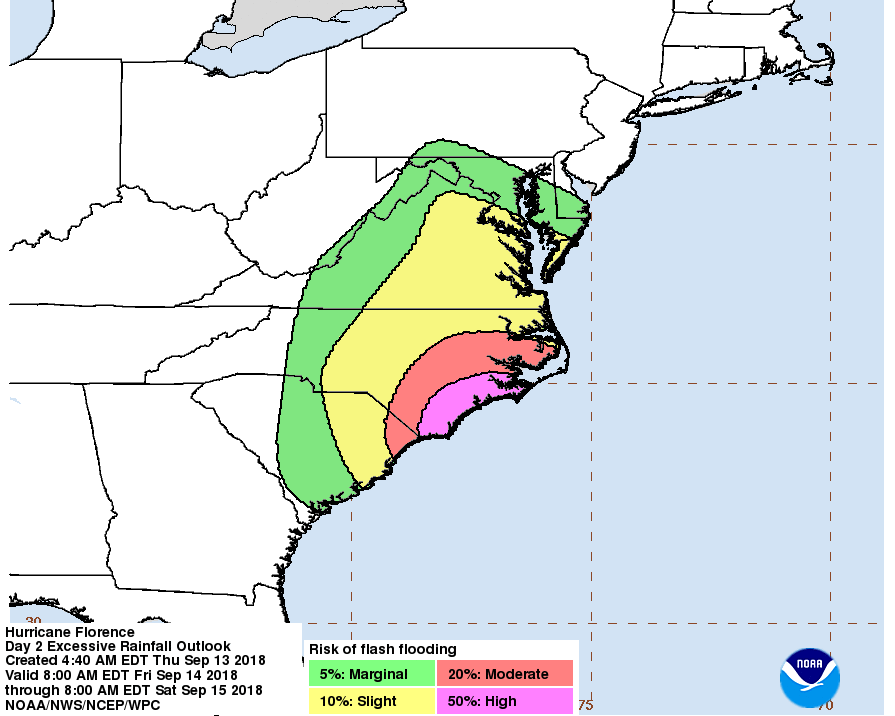Hurricane Florence has weakened slightly to a Category 2 storm, but don’t be fooled, it’s still incredibly dangerous.
While the storm may have slowed down slightly, it will still bring life-threatening storm surges, high winds, massive flooding and power cuts as it makes landfall on the coast of North and South Carolina.
At a press conference Thursday morning, officials stressed that Hurricane Florence’s wind speed may have fallen, but the danger has not.
“Just because the wind speeds came down, the intensity of this storm came down to a Category 2, please do not let your guard down,” said FEMA Administrator Brock Long. “The storm surge forecast associated with this storm has not changed.”

He added: “This is a very dangerous storm. Storm surge is why many of you have been placed under evacuation and we are asking citizens to please heed a warning. Your time is running out.”
The downgraded status of the storm, which indicates that Hurricane Florence is moving at maximum sustained wind speeds of 110 mph, means little in terms of its impact and deadly potential, according to Elliot Abrams, chief forecaster at Accuweather. He compares Hurricane Florence with Hurricane Isabel, which hit the Virginia and North Carolina area at a similar strength in 2003, leaving about a million people without power and Hatteras Island battered.
“We expected it to strengthen and then as it approached the coast to weaken somewhat,” Abrams says.
Even if Florence were downgraded to a Category 1 hurricane, it would still cause extensive damage, Abrams says. Waves off the shore of North Carolina have already gotten as high as 13 feet, he saYS.
“Yes its weakened, but is it strong enough to knock over a tree?” he says of Hurricane Florence. “It will fall down slowly but it will still fall down.”
Additionally, the National Hurricane Center has not changed its forecast for the storm surge – with up to 13 feet possible – or rainfall – with up to 40 inches dumped in some spots. A 2014 study found 76% of direct deaths from hurricanes were the result of these two factors.
Abrams says he expects Hurricane Florence to bring 10 to 20 inches of rain in most places and that the Carolinas can expect extensive flooding. The biggest problem will likely be mass power outages, he says.
“Power outages will linger the longest and cause the most trouble,” Abrams says. “Several million will probably lose power.”
More Must-Reads from TIME
- Why Trump’s Message Worked on Latino Men
- What Trump’s Win Could Mean for Housing
- The 100 Must-Read Books of 2024
- Sleep Doctors Share the 1 Tip That’s Changed Their Lives
- Column: Let’s Bring Back Romance
- What It’s Like to Have Long COVID As a Kid
- FX’s Say Nothing Is the Must-Watch Political Thriller of 2024
- Merle Bombardieri Is Helping People Make the Baby Decision
Write to Mahita Gajanan at mahita.gajanan@time.com and Alejandro de la Garza at alejandro.delagarza@time.com